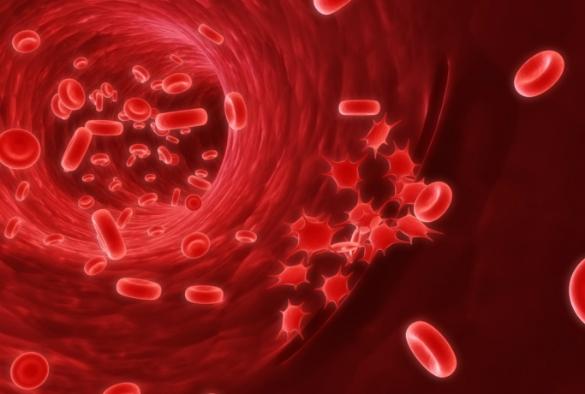Platelets, also known as thrombocytes, are tiny blood cells essential for normal blood clotting. When blood vessels are injured, platelets gather at the site, form clots, and stop bleeding. A healthy adult typically has between 150,000 and 450,000 platelets per microliter of blood. When the count drops below 150,000, the condition is referred to as thrombocytopenia, or low blood platelets.
Low platelet levels can range from mild (causing little or no symptoms) to severe (leading to life-threatening bleeding). Understanding the causes, symptoms, and treatments is crucial for effective management.
Causes of Low Blood Platelets
Thrombocytopenia can occur due to various reasons, broadly grouped into three categories: decreased platelet production, increased platelet destruction, and abnormal platelet distribution.
1. Decreased Platelet Production
When the bone marrow fails to produce enough platelets, counts decline. Causes include
-
Bone marrow disorders: Conditions such as aplastic anemia, leukemia, and myelodysplastic syndromes reduce platelet production.
-
Chemotherapy and radiation therapy: These cancer treatments suppress bone marrow function.
-
Viral infections: Hepatitis C, HIV, Epstein-Barr virus, and dengue fever can directly affect bone marrow.
-
Alcohol abuse: Excessive alcohol damages marrow cells and reduces platelet production.
-
Nutritional deficiencies: Lack of vitamin B12 or folate impairs platelet formation.
2. Increased Platelet Destruction
Sometimes platelets are produced normally but destroyed too quickly:
-
Autoimmune diseases: In immune thrombocytopenic purpura (ITP), lupus, and rheumatoid arthritis, the immune system mistakenly destroys platelets.
-
Medications: Certain drugs, including antibiotics, diuretics, and anticonvulsants, can cause immune-mediated platelet destruction.
-
Infections: Sepsis and severe bacterial infections accelerate platelet breakdown.
-
Heparin-induced thrombocytopenia (HIT): In rare cases, the blood thinner heparin triggers an immune response that destroys platelets.
3. Abnormal Platelet Distribution
In some conditions, platelets are sequestered or trapped in the spleen rather than circulating in the blood:
-
Enlarged spleen (splenomegaly): Seen in liver disease, cancers, or infections, this condition causes platelets to pool in the spleen.
4. Other Contributing Factors
-
Pregnancy: Mild thrombocytopenia occurs in about 5–10% of pregnancies, usually resolving after childbirth.
-
Genetic disorders: Rare inherited conditions such as Wiskott-Aldrich syndrome lead to chronic low platelet counts.
-
Medical treatments: Antibiotics like ceftriaxone can sometimes affect platelet counts, though this is rare. Patients receiving such therapies should always consult healthcare providers and source medications from a trusted ceftriaxone injection supplier to ensure safety and quality.
Symptoms of Low Platelet Count
The severity of symptoms depends on how low the platelet count is. Mild thrombocytopenia may cause no noticeable signs, while severe cases can be life-threatening. Common symptoms include:
-
Easy or excessive bruising
-
Prolonged bleeding from cuts
-
Tiny red or purple spots on the skin (petechiae)
-
Frequent nosebleeds or gum bleeding
-
Heavy menstrual bleeding in women
-
Blood in urine or stool
-
Fatigue and weakness
-
In severe cases: internal bleeding, stroke, or gastrointestinal hemorrhage
Diagnosis of Thrombocytopenia
If thrombocytopenia is suspected, doctors may recommend:
-
Complete blood count (CBC) to measure platelet levels.
-
Peripheral blood smear to examine platelet shape and distribution.
-
Bone marrow biopsy to evaluate platelet production.
-
Imaging studies to detect an enlarged spleen or liver problems.
-
Medical history and medication review to rule out drug-induced causes.
Treatment Options for Low Platelets
The treatment for thrombocytopenia depends on its underlying cause and severity.
1. Observation
-
Mild cases without symptoms may not require immediate treatment, just regular monitoring.
2. Treating the Underlying Cause
-
Infections: Treating the root infection often restores platelet levels. For example, patients with bacterial infections may be prescribed antibiotics like ceftriaxone. Here, ensuring the medication comes from a reputable ceftriaxone injection supplier guarantees both efficacy and safety.
-
Nutritional deficiency: Supplementation with vitamin B12 or folic acid can normalize platelet counts.
-
Alcohol-related thrombocytopenia: Stopping alcohol intake usually reverses the condition.
3. Medications
-
Corticosteroids (e.g., prednisone): Used for immune-mediated platelet destruction.
-
Intravenous immunoglobulin (IVIG): Helps stop immune system attacks on platelets.
-
Thrombopoietin receptor agonists: Stimulate the bone marrow to produce more platelets.
4. Blood or Platelet Transfusions
-
Used in emergency cases of severe bleeding or critically low platelet counts.
5. Surgery
-
Splenectomy (removal of the spleen): Recommended if the spleen is the cause of excessive platelet destruction.
Lifestyle and Home Care Tips
While medical treatment is essential, lifestyle adjustments can help minimize bleeding risks:
-
Avoid contact sports and activities that may cause injuries.
-
Use a soft-bristled toothbrush and avoid harsh dental floss.
-
Stay away from over-the-counter painkillers like aspirin or ibuprofen, which interfere with platelet function.
-
Eat a balanced diet rich in folate, B12, and iron.
-
Limit alcohol consumption.
The Role of Safe Medication Supply
When managing conditions like thrombocytopenia, the quality of medicines used in treatment matters significantly. For instance, patients treated with antibiotics such as ceftriaxone injections during bacterial infections need assurance that the product is authentic, effective, and safe. Partnering with a reliable ceftriaxone injection supplier helps healthcare providers avoid counterfeit or substandard drugs, which can worsen patient outcomes.
When to Seek Immediate Medical Help
Seek urgent medical attention if you experience
-
Unexplained heavy bleeding
-
Vomiting blood or passing black, tarry stools
-
Severe headaches or vision problems (possible brain bleeding)
-
Chest pain or difficulty breathing
These could indicate life-threatening complications.
Conclusion
Low blood platelets, or thrombocytopenia, can arise from reduced production, increased destruction, or abnormal distribution of platelets. Causes range from infections and autoimmune diseases to medications and bone marrow disorders. While some cases resolve on their own, others require targeted treatment such as corticosteroids, immunoglobulins, platelet transfusions, or even surgery.
Equally important is ensuring medication safety. For patients who require antibiotics like ceftriaxone, obtaining them from a trustworthy ceftriaxone injection supplier ensures effectiveness, safety, and better recovery outcomes. By combining accurate diagnosis, proper treatment, lifestyle care, and reliable medication sources, patients with low platelets can achieve improved health and quality of life.

